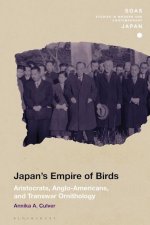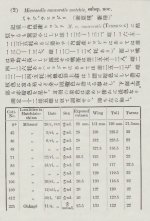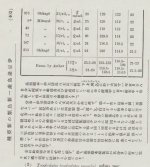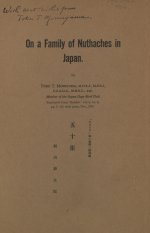Book Summary / Abstract
As a transnational history of science,
Japan’s Empire of Birds: Aristocrats, Anglo-Americans, and Transwar Ornithologyfocuses on the political aspects of highly mobile Japanese explorer-scientists, or cosmopolitan gentlemen of science, circulating between Japanese and British/American spaces in the transwar period from the 1920s to 1950s.
Annika A. Culver examines a network of zoologists united by their practice of ornithology and aristocratic status. She goes on to explore issues of masculinity and race related to this amidst the backdrop of imperial Japan’s interwar period of peaceful internationalism, the rise of fascism, the Japanese takeover of Manchuria, and war in China and the Pacific. Culver concludes by investigating how these scientists repurposed their aims during Japan’s Allied Occupation and the Cold War. Inspired by geographer Doreen Massey, themes covered in the volume include social space and place in these specific locations and how identities transform to garner social capital and scientific credibility in transnational associations and travel for non-white scientists.
Acknowledgments pp. xi–xiv
The collective assistance of numerous individuals, organizations, and institutions in Japan, the United States, Germany, and Great Britain aided in this book’s completion. Much of this project began fortuitously and percolated through anecdotes, slowly unfolding in a fascinating American expat’s journey, which inspired me to investigate the Japanese scientists surrounding him. In 2008, I first discovered the ornithologist and Allied Occupation official Oliver L. Austin Jr. through colorful stories by his granddaughter Valerie Austin. I thank her father Tony, now deceased, and the immediate Austin family, for generously sharing memories of Austin and his Japan sojourn. Exchanges with Timmy Austin painted a certain portrait of his father, while his older brother Tony expressed another opinion. In November 2013, Tony recounted a full oral history of his late 1940s Tokyo boyhood, conversational English lessons with Crown Prince Akihito, and Austin’s role in postwar Japan. This led to donation of his father’s ...
Introduction: Birds of a Feather Flock Together: Japanese Aristocrats and the Cosmopolitan Science of Empire pp. 1–16
In summer 2020, to raise awareness for Black Birders Week and Black Lives Matter (BLM) , while prevented from in-person lab research due to pandemic-related precautions, Scott V. Edwards, Alexander Agassiz Professor and Curator of Ornithology at Harvard University’s Museum of Comparative Zoology, began riding his bike in a bold solo traversal of the United States. On June 6, Edwards ventured from Newbury Port, Massachusetts, on the Atlantic Ocean, and planned to reach the Pacific Ocean weeks later, after riding 50 to 60 miles daily on a bicycle festooned with political signs, and pitching his tent overnight in local campgrounds. A July 31 Harvard Gazette article indicated Edwards’ reasons for his meaningful trip, “one he’d longed to make for years”: as a Black birder and a Black scientist, he decided he also wanted to raise awareness of the movements and give his trip a larger purpose as racial tensions across ...
Chapter 1. The Practice of Ornithology: Birds, Hunting, and Social Class in Prewar Japan and the Anglo-American World pp. 17–42
Prewar Japanese scientists engaging in the study of birds were usually men from aristocratic backgrounds with disproportionate political influence in the National Diet’s House of Peers; thus, any book examining their lives begs a penetrating look into ornithology and its political aspects. Yet, one must first understand how the field began as an offshoot of zoology supported by existing Japanese traditions of popular enjoyment of birds, including in the arts, bird keeping, and various hunting methods. Associations like the Ornithological Society (est. 1912) and Wild Bird Society (est. 1934) later formalized circles of ornithologists and enthusiasts, who also published research findings in English and Japanese in publications like Birds to make their work readily accessible to the broader Anglo-American world. The formation of this world, and its initial intersections with Japanese ornithological endeavors, will be examined to underline why these scientists believed in close interactions with it to legitimate their ...
Chapter 2. Western Villas in Aristocratic Hands: Spaces of Imperial Mimesis and Informal Scientific Exchange pp. 43–64
As agents of empire, Japanese zoologists and ornithologists were public figures, with domestic spaces influenced by their public personas while entertaining guests and enacting social practices representative of their class. Their passion for birds greatly marked their estates and private living quarters — often occupying considerable room in collections, private museums, and aviaries. To understand how they lived and worked, it is useful to examine spaces where these scientists circulated within Tokyo and its environs, as imperial and postwar Japan’s political capital. Japanese aristocrats like Yamashina Yoshimaro, Kuroda Nagamichi, and Hachisuka Masauji built their own private museums, laboratories, and aviaries on large, landed urban estates and at seaside homes. These museums mirrored British counterparts like Tring Park, owned by amateur zoologist Lord Rothschild, Hachisuka’s friend. These scientists’ hybrid Western and Japanese professional and domestic milieux, and performances of “honorary whiteness” within, expressed a distinct “cultural mimesis,” or a “deliberate performance of ...
Chapter 3. Cambridge, UK (1925–9)—From “Scandalous Marquis” to Explorer-Scientist: Japanese in Western Imperial Settings pp. 65–80
Although imperial Japan’s leading ornithologists numbered only a few dozen and composed a small network domestically, many of them held disproportionate political power as aristocrats in the House of Peers; they also notably inserted themselves into influential Western scientific networks in the Anglo-American world as transnationally focused researchers while publishing important scholarly contributions. Engaging in scientific research of birds or other fields and corresponding with Western scientists or personally interacting with their circles overseas was common for Japanese aristocrats and imperial elites, including Emperor Hirohito who as a marine biologist exemplified these trends. However, all could be considered cosmopolitan imperial scientists. As a key illustration of cultural mimesis and the culturally hybrid worlds inhabited by prewar Japanese ornithologists, this chapter details the controversial Marquis Hachisuka Masauji’s formation as a “gentleman of science” in 1920s peregrinations throughout the Japanese Empire, Europe, and Africa while based at University of Cambridge allegedly for ...
Chapter 4. The Philippines (1929–31)—A Japanese Ornithologist Encounters the American Empire pp. 81–108
Prevailing transwar expressions of elite Japanese masculinity surrounding Western science arose out of strong associations with imperialism. Garbed in adopted Western dress and practices while hunting for specimens, Japanese ornithologists like Marquis Hachisuka Masauji engaged in mimetic performances of imperial masculinity as explorer scientists in forms of collecting imperialism. This chapter focuses on Hachisuka’s exploration of Mount Apo during a 1929 expedition in the Philippines, with his findings documented in four (intended as five) volumes in the early-to-mid 1930s. The Japanese and American empires touched waters in the Philippines, where Japanese scientists like Hachisuka and American military personnel like raptor expert Captain Lloyd R. Wolfe first crossed paths. While outfitted in military dress of the American colonizers, Hachisuka encountered and employed Indigenous peoples, carved his name upon a rock atop Mount Apo, and discovered new species, while circulating in American colonial spaces and performing a (waning) honorary white imperial masculinity ...
Chapter 5. Manchukuo and the Japanese Empire (1932–40)—Deploying Avian Imperialism in the Media, Military, and Scientific Expeditions pp. 109–134
Located in Japanese-occupied northeast China, or Manchuria, imperial Japan’s client state of Manchukuo (1932–45) provided a strategic laboratory for Japanese exploration and scientific research, including ornithology. Domestic and overseas media publicized such endeavors, where broader publics consumed reports of Japanese scientific expeditions and avifauna in a new state under imperial Japan’s tutelage and stewardship when Manchukuo’s founding was still controversial in the Anglo-American world. Ornithologists from the imperial capital interacted with those in colonial peripheries to share specimens, data, and political information in areas where scientific knowledge mobilized mechanisms of control. The Kantô Army even mobilized and militarized carrier pigeon squadrons to collect data and surveille territory. In Manchukuo, mobilization of ornithologists and the birds they studied prefigured broader domestic mobilizations in wartime Japan from the early 1940s onward. From June to October 1933, celebrated Waseda University Professor of Geology Tokunaga Shigeyasu (1874–1940) led the first Japanese state-funded overseas scientific ...
Chapter 6. Wartime Tokyo and Defeat (1937–45)—Mobilizing Imperial Japan’s Ornithologists and Birds for War pp. 135–164
Wartime Tokyo served as an important locus for scientific endeavors, including the activities of the politically influential Duke Takatsukasa Nobusuke and his colleagues at a time when birds, ornithology, and ornithologists were all mobilized for war. In various, sometimes seemingly contradictory positions, Takatsukasa exemplifies these scientists’ multidisciplinary roles in a wartime mobilization where their expertise and research could aid in ensuring military success or support the home front. While serving in the House of Peers, this ornithologist not only acted as the Meiji Shrine’s head priest from 1944 into the post-war period, but also headed the Hunters’ Association, Japanese Association of Zoological Gardens and Aquariums, and Ornithological Society (1922–46) , which he headed after the 1922 death of his mentor, Iijima Isao, the “father” of Japanese parasitology, who founded the Ornithological Society in 1912. During wartime, Takatsukasa and his counterparts, including Yamashina Yoshimaro and Hachisuka Masauji, served in the Shigen ...
Chapter 7. Tokyo under the Allied Occupation (1945–52)—Yankees with a Mission amongst Threadbare Aristocrats pp. 165–194
From the 1920s until 1945, imperial Japan’s scientists worked to aggrandize personal and state aims in an imperial context. Zoologists, of which a sizable portion considered themselves ornithologists, were highly connected to political centers as House of Peers members and aristocratic men. Yet, the mid-August 1945 defeat of imperial Japan by Allied Forces led by the United States displaced the locus of political power into the putative conquerors’ hands until the Occupation’s 1952 completion. Following the Japanese empire’s swift collapse, the Anglo-American occupying powers applied new ideologies to fill Japan’s political vacuum, including their versions of democracy and social interactions to supplant those of a defeated population. This included new paradigms for bird conservation. This chapter shifts focus to the occupying Americans by exploring relationships of Japanese scientists with the American ornithologist, Oliver L. Austin Jr. , who set up and worked for SCAP’s NRS Wildlife Branch from 1946 to ...
Chapter 8. Tokyo and the United States (1940s–70s)—Cold War Ornithological Collaborations between Japanese and American Scientists pp. 195–212
Transwar imperial continuities within the lives and careers of Japan’s leading ornithologists continued to suffuse their activities deep into the postwar and stunningly reveal key global roles played by these cosmopolitan scientists so invested in supporting national goals. Moreover, garnering high status as non-white leaders in a field dominated by Anglo-Americans often involved complex strategies of collaboration and competition, masking rivalries enmeshed in politically transcendent colleagueship. This chapter focuses upon the activities of Kuroda Nagahisa, who assisted Oliver L. Austin, Jr. , and then H. Elliott McClure (1910–98) , a US military-funded American entomologist who studied insect-borne illnesses carried by birds. Such collaborations reveal how, from the late 1940s and into the 1950s, Japanese scientists like Kuroda were absorbed into the American Cold War apparatus at a time when sensitive scientific information aided in cementing loyalty for a new US ally — often relying on past wartime expertise. After the Allied ...
Conclusion: Tokyo and Cambridge, UK (1960–Present), Fledging Global Conservation Policies
Postwar initiatives of the Tokyo and Cambridge-based ornithologists Yamashina Yoshimaro and Nakamura Tsukasa, in a purportedly more “peaceful” field of science, allowed Japan to re-emerge as a leader in the Western scientific world, including hosting the 1960 International Council on Bird Preservation (ICBP) meeting in Tokyo at a flashpoint in domestic reactions surrounding renewal of the US-Japan Mutual Security Treaty. Long-standing connections with the Anglo-American world previously fostered through specimen-exchanges and study also precipitated such scientific exchanges. Using cytology to establish precise taxonomies, transnational bird migration surveys, and global conservation served as new ornithological arenas in the internationally recognized revival of peaceful Japanese scientific endeavors, and by the 1960s, developed as a means for Japan to reassert its international impact as Cold War aims evolved into furtherance of transnational exchanges for peace. As ornithologists, Yamashina and Nakamura represented Japan’s peripatetic scientific elites exerting a global influence, and evince a trend ...
Bibliography
Index










